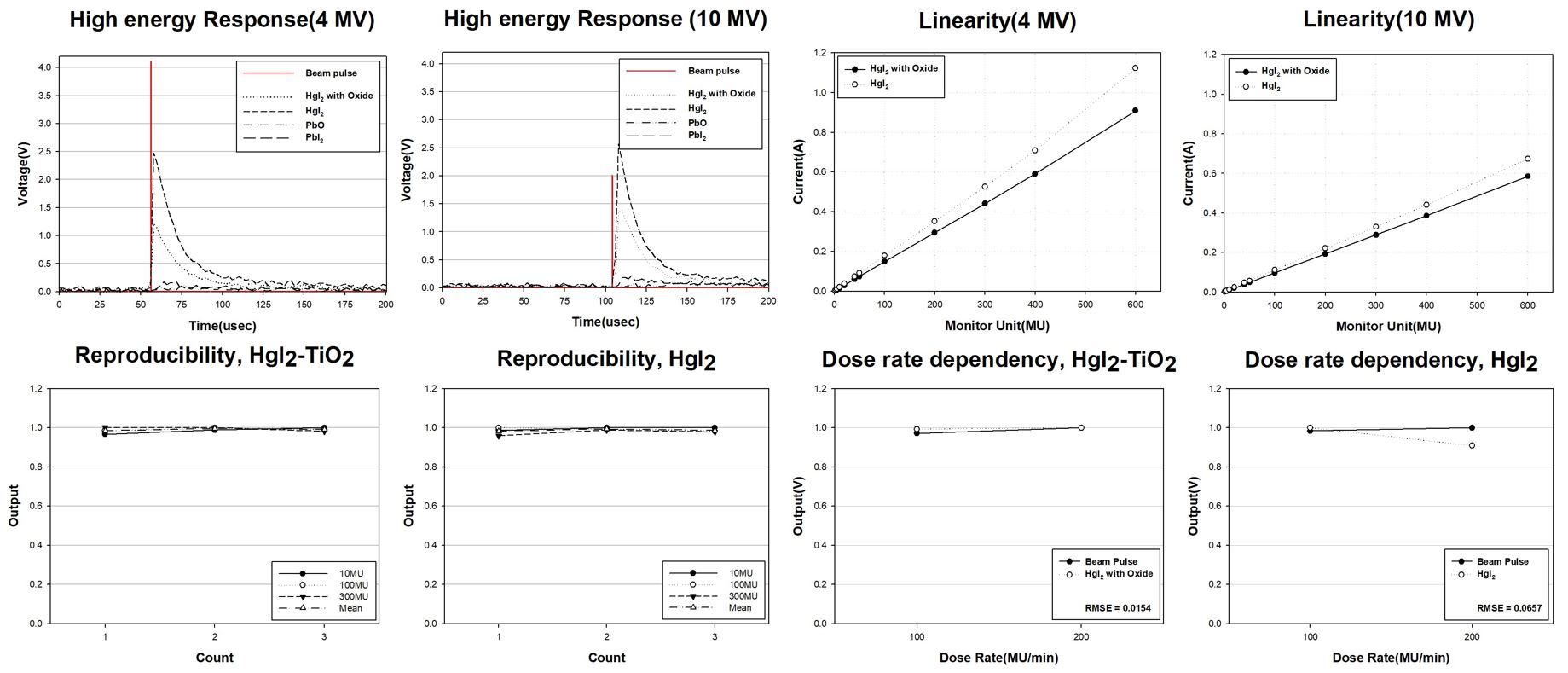Dosimetric Characteristics of Photoconductive Material for High Energy Beam in Radiation Therapy
PO-1588
Abstract
Dosimetric Characteristics of Photoconductive Material for High Energy Beam in Radiation Therapy
Authors: Kum Bae Kim1, Gyu-Seok Cho2, Kyo-Tae Kim2, Sang Hyoun Choi2
1Korea Institute of Radiological & Medical Sciences, Department of Radiation Oncology, Seoul, Korea Republic of; 2Korea Institute of Radiological & Medical Sciences, Research Team of Radiological Physics & Engineering, Seoul, Korea Republic of
Show Affiliations
Hide Affiliations
Purpose or Objective
To
evaluate the dosimetry characteristics of photoconductive materials for high
energy beam in radiation therapy, we fabricated detector unit-cell using the
material such as HgI2 (Mercuric Iodide), HgI2-TiO2 (Mercuric
Iodide–Titanium Oxide), PbO (Lead Oxide), PbI2 (Lead Iodide) and HgO
(Mercuric Oxide) by Particle-In-Binder method.
Material and Methods
To
evaluate the fabricated unit-cells, we
measured the dosimetric characteristics that the radiation detector should have
such as a high energy response, dose rate dependence, linearity, and reproducibility
using 4 and 10 MV photon beam. The radiation field size and source-to-surface
distance was 10x10 cm2 and 100 cm, respectively. The unit-cells were
placed in a dark room to make it only respond to the radiation because it has
light sensitive property. To obtain output signals of the unit-cells, we use a
current to voltage converter circuit because an initial output of the
fabricated unit cell is the current. Then, the output signal with voltage was
processed by NI DAQ (NI SCB-68). Also, the output signals of the LINAC (Linear
Accelerator) beam pulse was obtained by NI DAQ (NI USB-6363) [Figure
1].

Figure 1 Schematic diagram of (a) measurement set-up and (b) signal acquisition circuit
Results
As a result,
HgI2 and HgI2-TiO2 cell shows a good response
with 1.2, 2.5 and 1.4, 2.6 voltages at the 4 and 10 MV, respectively.
Especially, the sensitivity of the HgI2 unit-cell was higher than
that of LINAC output at 10 MV. However, the PbO and PbI2 unit-cell
shows a poor response less than 0.1 voltage. Therefore,
further measurement was done using the HgI2 and HgI2-TiO2
unit cell. The linearity measurement shows that R2
value is 0.9999 (HgI2-TiO2) and 0.9998 (HgI2)
at 10 MV. To evaluate the dose rate dependency, the result compared with the
LINAC output. The results shows that the HgI2 unit cell was almost same
with the LINAC output as 0.0154 of the RMSE. The
reproducibility of the HgI2 and HgI2-TiO2 unit
cell was also compared with the LINAC beam pulse. All the RMSE value shows
almost 0. And the standard deviation of the HgI2
and HgI2-TiO2 unit cell was 0.45% and 0.6% at the 4 MV
beam and 0.95% and 0.48% at the 10 MV beam, respectively [Figure 2].
 Figure 2 Results of the unit-cell measurement
Figure 2 Results of the unit-cell measurement
Conclusion
In
this study, we demonstrated that the photoconductive material has
dosimetric characteristics for high energy radiation dosimeter and it’s
possible as an alternative of indirect material. Therefore, it is considered to
be of great significance as a fundamental study in applying photoconductive
materials to high energy radiation dosimeters.